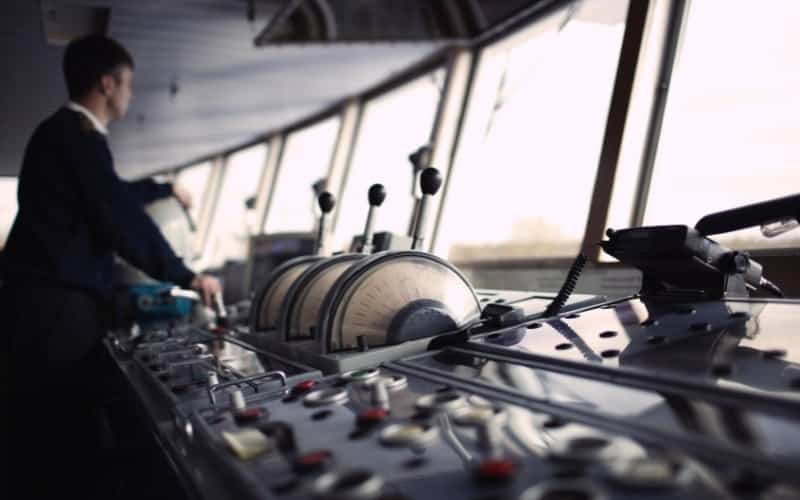

The Wartsila Encyclopaedia defines IBS as “A series of interconnected and closely grouped screens and modules allowing centralised access to navigational, propulsion, control and monitoring information. The aim of IBS is to increase safe and efficient ship management by the qualified personnel.”
It is a combination of systems, which are interconnected to allow a centralized monitoring of various navigational tools. IBS allows acquiring and control of sensor information of a number of operations such as passage execution, communication, machinery control, and safety and security.
Integrated bridge system (IBS) is a kind of navigation management system which links other systems to provide all the details pertaining to ship’s navigation at one place. It is to note that not all types of ships have the same type of IBS. The system would vary according to the design of the ship’s bridge, various types of equipment used by the ship, and general layout of the equipment of the bridge.


The IBS system should support two or more of the following aspects:
IBS is not mandatory on ships. Its installation and design criteria is laid out by classification societies such as the NAV1 class for LR, the W1-OC class from DNC are examples of class arrangements for IBS. Factors determining the layout includes bridge design, type of equipment fitted and their positioning on the bridge. IBS can be clubbed under four major parts:
The IBS usually consists of:
According to SOLAS Chapter V, Reg 19, para 6 “Integrated bridge systems shall be so arranged that failure of one sub-system is brought to the immediate attention of the officer in charge of the navigational watch by audible and visual alarms, and does not cause failure to any other sub-system. In case of failure in one part of an integrated navigational system, it shall be possible to operate each other individual item of equipment or part of the system separately”
An alarm system links all the above-mentioned systems and gives out audio and visual signal in case of an emergency condition. (There can be more systems connected to the IBS and to the alarm system)
In most ships, an additional alarm connected to the IBS is also fitted in the cabins of navigational officers. This alarm provides a signal in the cabins within 30 seconds in case the officer in charge fails to acknowledge an alarm. The alarm system should also include a watch safety or fitness alarm to monitor the alertness of the OOW. A number of alarm acknowledgement points, each with a pre-warning alarm to give the OOW notices that the alarm is about to be activated should be available around the bridge. As with the failure is the OOW to acknowledge a navigation alarm, if the fitness time interval expires, an alarm should away from the bridge.
Guidelines laid out for IBS states that should the IBS be subjected to an orderly shut down, it will restart and present itself in the default state. In case that it is shut down inadvertently, the IBS should, upon restart, be restored to full functionality with the configuration in use prior to shutting down. The power supply shall be:
Though IBS is an excellent system for navigation, officers on watch shouldn’t completely rely on the equipment but should pay proper attention to visual navigational watchkeeping techniques as well.
Also, proper guidelines should be provided on the bridge manual as to when to use and when not to use the Integrated Bridge System (IBS).
INS is a combination of navigational data and systems interconnected to enhance safe navigation of the vessel. IBS interconnects various other systems along with the INS to increase overall management efficiency. It can be said that the INS is specific while the IBS is general in approach.
Though IBS is an excellent system for navigation, officers on watch shouldn’t completely rely on the equipment but should pay proper attention to visual navigational watchkeeping
techniques as well.
Also, proper guidelines should be provided on the bridge manual as to when to use and when not to use the Integrated Bridge System (IBS).










We believe that knowledge is power, and we’re committed to empowering our readers with the information and resources they need to succeed in the merchant navy industry.
Whether you’re looking for advice on career planning, news and analysis, or just want to connect with other aspiring merchant navy applicants, The Marine Learners is the place to be.